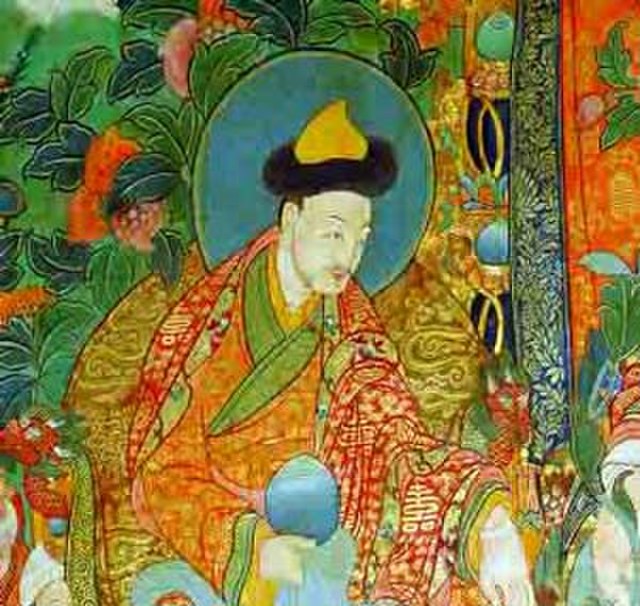Güshi Khan was a Khoshut prince and founder of the Khoshut Khanate, who supplanted the Tumed descendants of Altan Khan as the main benefactor of the Dalai Lama and the Gelug school of Tibetan Buddhism. In 1637, Güshi Khan defeated a rival Mongol prince Choghtu Khong Tayiji, a Kagyu follower, near Qinghai Lake and established his khanate in Tibet over the next years. His military assistance to the Gelug school enabled the 5th Dalai Lama to establish political control over Tibet.
Güshi Khan
Statues of the Fifth Dalai Lama and (apparently) Güshi Khan seen by Johann Grueber in the lobby of the Dalai Lama's palace in 1661
The Khoshut Khanate was a Mongol Oirat khanate based in the Tibetan Plateau from 1642 to 1717. Based in modern Qinghai, it was founded by Güshi Khan in 1642 after defeating the opponents of the Gelug school of Tibetan Buddhism in Tibet. The 5th Dalai Lama established a civil administration known as Ganden Phodrang with the aid of Güshi Khan. The role of the khanate in the affairs of Tibet has been subject to various interpretations. Some sources claim that the Khoshut did not interfere in Tibetan affairs and had a priest and patron relationship between the khan and Dalai Lama while others claim that Güshi appointed a minister, Sonam Rapten, as de facto administrator of civil affairs while the Dalai Lama was only responsible for religious matters. In the last years of the khanate, Lha-bzang Khan murdered the Tibetan regent and deposed the 6th Dalai Lama in favor of a pretender Dalai Lama.
Güshi Khan, founder of the Khoshut Khanate
Funeral monument to a Koshut prince.
Lha-bzang Khan, the last Khoshut King of Tibet
Seal of Lha-bzang Khan, the last Khoshut King of Tibet.





